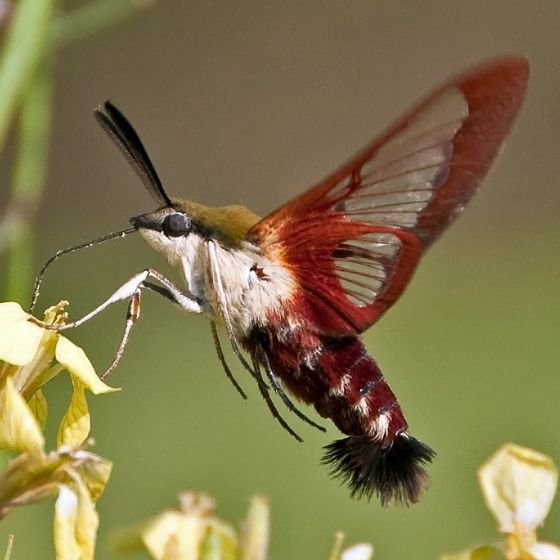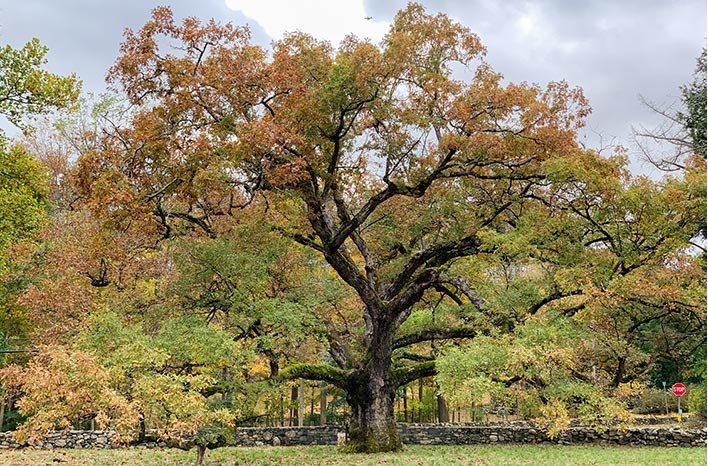Planting for Moths: The Overlooked Pollinators of New Jersey
When we think of pollinators, butterflies and bees usually steal the spotlight. But New Jersey’s native moths are just as essential—if not more so—to our local ecosystems. These nighttime visitors play a crucial role in pollination, provide a food source for birds and other wildlife, and bring a quiet beauty to the garden that’s often overlooked.
If you're designing a garden that supports biodiversity, planting for moths is a must. Let’s explore why these creatures deserve more attention and which plants will invite them into your landscape.
The Magic of Moths
Moths are not just drab, brown insects fluttering around porch lights. Many are stunning in their own right, like the vibrant green Luna moth (Actias luna) or the striking Rosy Maple moth (Dryocampa rubicunda), with its soft pink and yellow hues. Even less flashy species, like the Hummingbird Clearwing moth (Hemaris thysbe), amaze with their ability to hover like tiny hummingbirds while sipping nectar from flowers.
Beyond their beauty, moths serve an essential function in the food web. Their caterpillars provide a vital protein source for birds—especially during nesting season. Many songbirds rely on moth larvae to feed their young, making a moth-friendly garden a bird-friendly one as well.
Moths are also highly effective pollinators. Unlike bees, which tend to focus on collecting pollen, moths transfer pollen passively as they feed. Some plants, particularly those that bloom at night or in low light, have evolved to depend on moths for pollination.
How to Create a Moth-Friendly Garden
Moths need both nectar sources for the adults and host plants for their caterpillars. A well-designed garden will include a mix of flowering plants, shrubs, and trees that support them throughout their life cycle.
Best Native Plants for Moths in New Jersey
Night-Blooming and Fragrant Flowers (For Adult Moths)
Moths are primarily nocturnal, so they are drawn to pale-colored flowers that reflect moonlight and emit fragrance at night. Great options include:
Evening Primrose (Oenothera biennis) – A favorite of the Primrose moth (Schinia florida), this native wildflower opens its bright yellow blooms at dusk.
Wild Bergamot (Monarda fistulosa) – While a favorite of butterflies and bees, this mint-family plant also attracts moths with its lavender blooms and abundant nectar.
Virginia Bluebells (Mertensia virginica) – An early-spring bloomer that supports both diurnal and nocturnal pollinators.
Phlox (Phlox divaricata, Phlox paniculata) – The soft pastel hues of native Phlox are irresistible to moths seeking nectar in the evening.
Joe-Pye Weed (Eutrochium fistulosum) – Large clusters of pink flowers provide an excellent nectar source for many moth species.
Common Milkweed (Asclepias syriaca) – While known for attracting monarch butterflies, its fragrant blooms are also a major moth magnet.
Host Plants for Moth Caterpillars
Just like monarchs need milkweed, many moth species rely on specific plants to complete their life cycle. Here are a few important host plants:
Oaks (Quercus spp.) – Host to over 500 species of caterpillars, including several moths vital to bird populations.
Willows (Salix spp.) – Essential for many silk moths, including the Luna moth.
Wild Cherry (Prunus serotina) – Supports a variety of caterpillars, including the Cecropia moth (Hyalophora cecropia), North America’s largest native moth.
Hickories (Carya spp.) – Host plants for the beautiful Regal moth (Citheronia regalis), also known as the Hickory Horned Devil in its larval stage.
Violets (Viola spp.) – A favorite food source for the larvae of several smaller moth species.
Creating the Right Habitat
Beyond choosing the right plants, here are a few additional tips to make your garden more moth-friendly:
1. Reduce Outdoor Lighting
Moths are drawn to artificial lights, which can disrupt their natural behaviors and make them easy prey. Use warm-colored or motion-activated lighting to minimize disturbance.
2. Avoid Pesticides
Many moth caterpillars are mistaken for pests, but they are crucial to the ecosystem. Reducing or eliminating pesticide use allows them to thrive.
3. Leave Some Leaf Litter
Many moth species overwinter as pupae in leaf litter. Leaving leaves and plant debris in garden beds gives them a safe place to complete their life cycle.
4. Create a Diversity of Plant Heights
Incorporating layers—groundcovers, perennials, shrubs, and trees—gives moths multiple options for feeding, resting, and laying eggs.
The Beauty of Moth Gardening
Planting for moths is one of the simplest and most rewarding ways to support local wildlife. It enriches your garden by increasing biodiversity, attracting birds, and adding a whole new world of fascinating creatures to observe.
The next time you see a moth fluttering around at dusk, take a moment to appreciate the role it plays in your garden’s ecosystem. With the right plants and habitat, you can turn your landscape into a haven for these overlooked pollinators—proving that a garden truly comes alive at night.





